Big Bend, 2013

Dawn, Menagerie Springs, Big Bend National Park.
I first visited Big Bend NP for a couple of days in 1998. I returned 15 years later in May 2013 to catch bats with a team from Angelo State University. Fiona Reid introduced me to Dr Loren Ammerman after I dipped on Ghost-faced Bats in Nicaragua. I tell you, if the quality of Fiona’s guiding isn’t enough to persuade you to take one of her trips, then her connections around the US and the Amazon ought to be! Although Ghost-faced Bats were my main goal, there were a range of other nice bats I hoped to see in Big Bend, plus endemics like the Davis Mountain Cottontail.
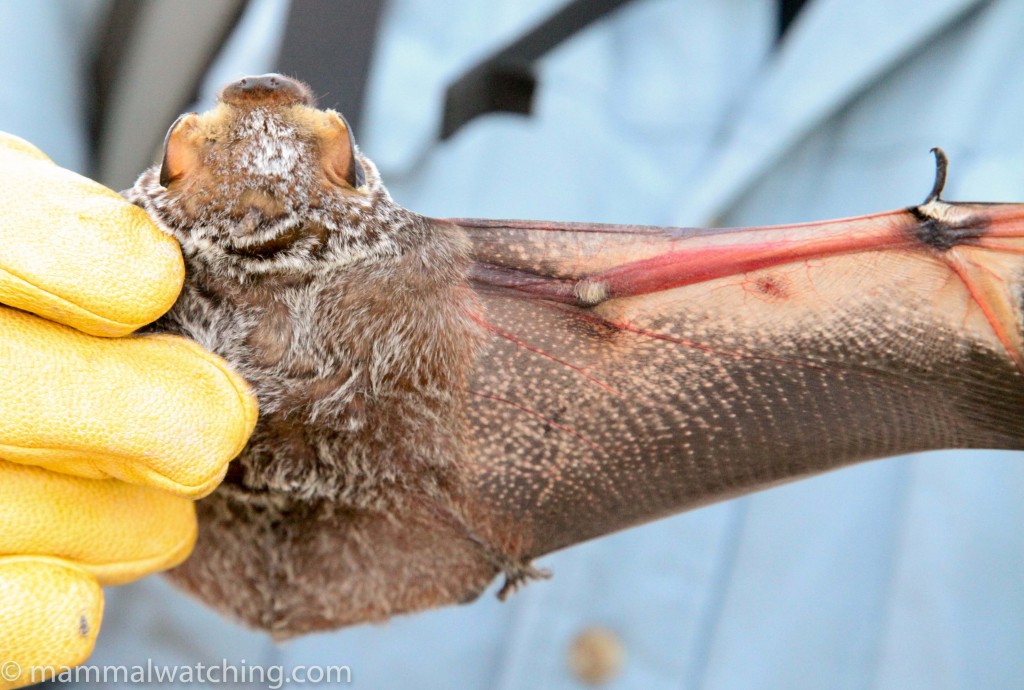
Hoary Bat, Lasiurus cinereus
Big Bend is about six hours’ drive from San Antonio airport. I stopped en route at Seminole Canyon State Park where the ranger said he sometimes saw (what I suppose were) Mexican Ground Squirrels crossing the road between the visitors centre and the campsite. I didn’t find any during an hour’s searching.
The first night’s batting was at Menagerie Springs, a three mile hike to the north west of the Fossil Bone Exhibit in the park. A deserted area and quite beautiful. It feels like it had been a while since I was in the desert and I remembered how much I love it.
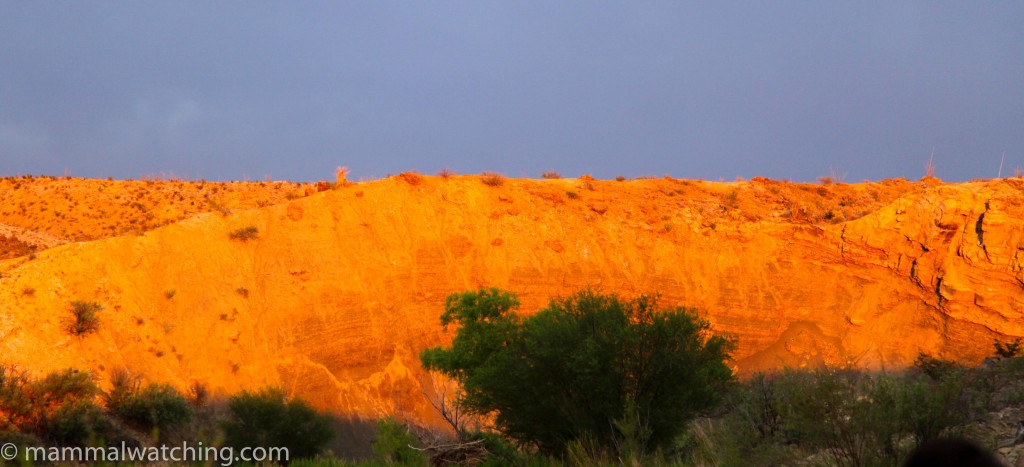
Sunset, Menagerie Springs
The plan was to monitor the six nets continuously until about midnight and then hourly until dawn. The plan worked: we caught many bats, notching up nine species, four of them new for me.
Brazilian Freetail Bats were the dominant species.
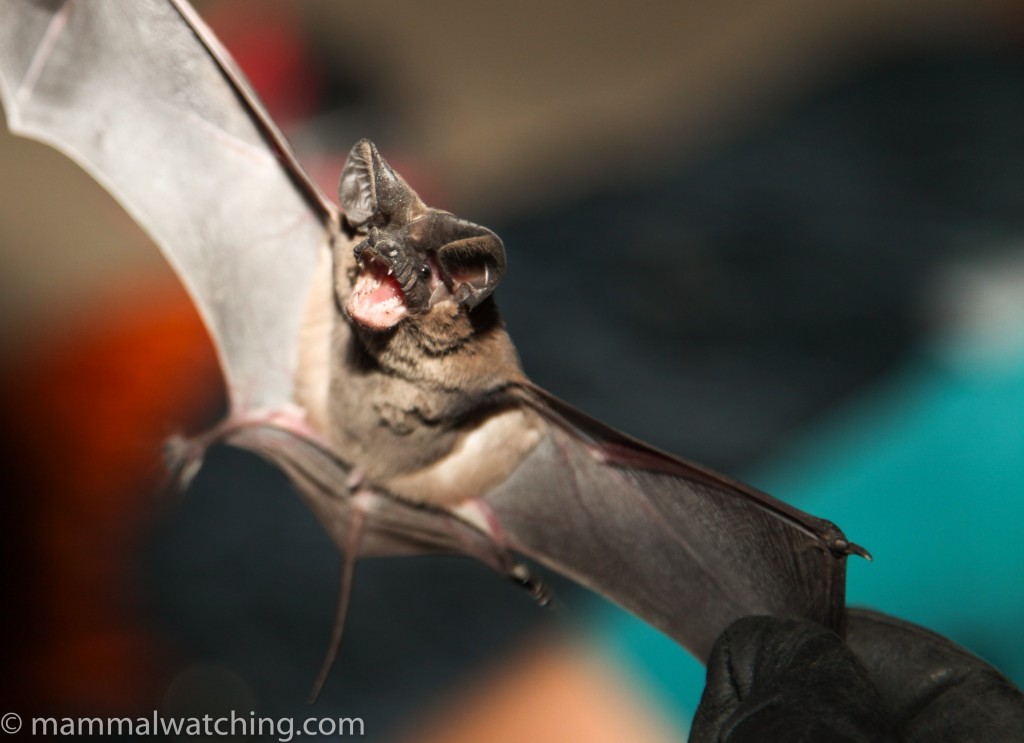
Pocketed Free-tailed Bat, Nyctinomops femorosaccus
But the other captures were more interesting starting with my first Pocketed Free-tailed Bat (Nyctinomops femorosaccus).
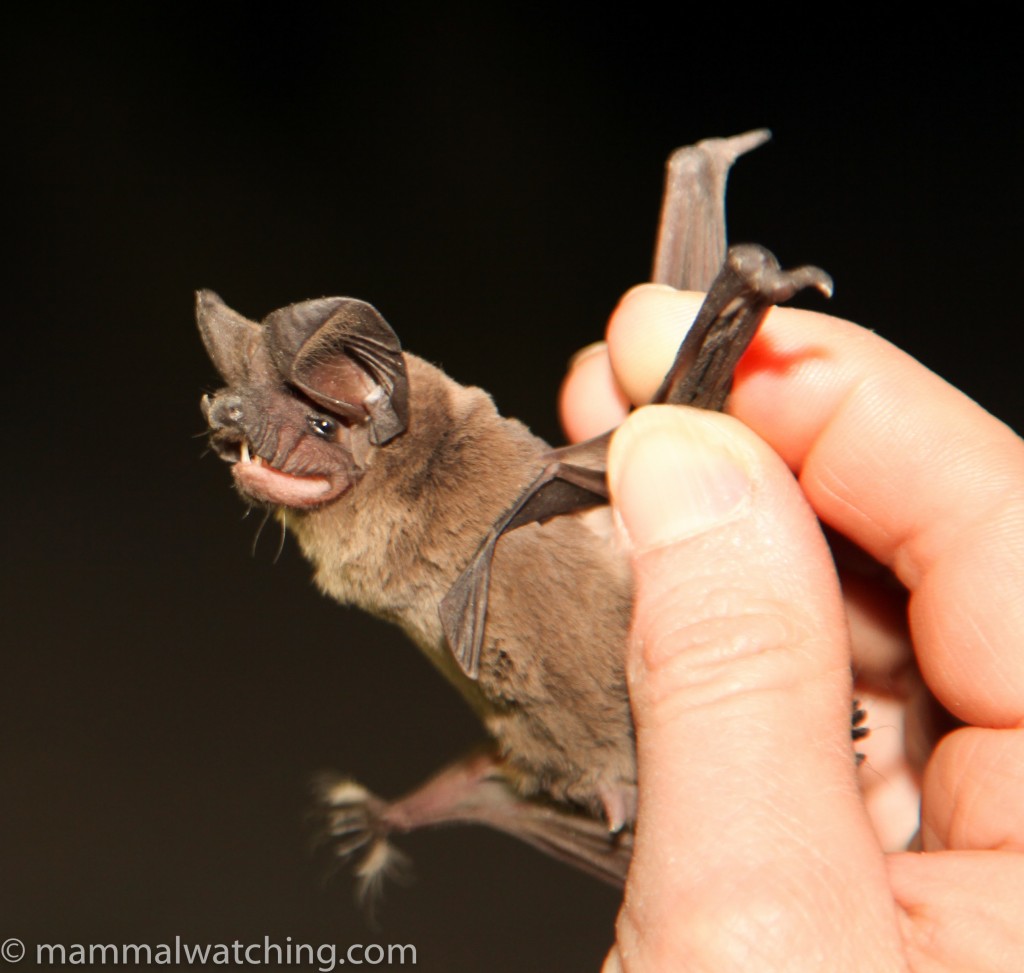
Pocketed Free-tailed Bat, Nyctinomops femorosaccus
Next up were the first of quite a few Canyon Bats (aka Western Pipistrelles)(Parastrellus hesperus) which I’d not seen in the hand before.
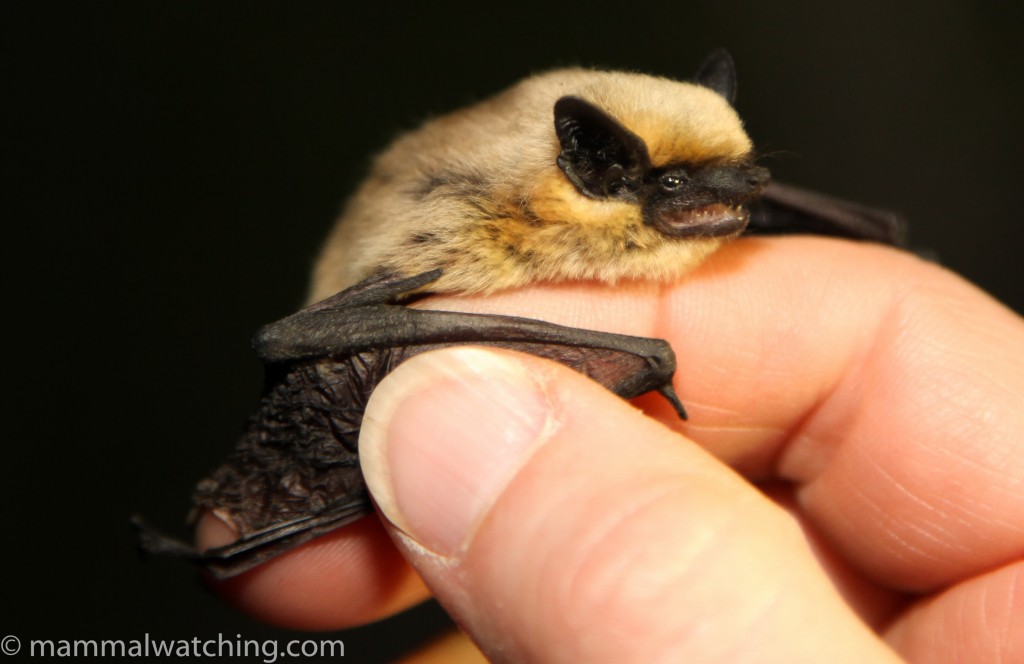
Canyon Bat, Parastrellus hesperus
And then we hit the jackpot with a wonderful Ghost-faced Bat. Such a peculiar animal. Loren told me that the genus Mormoops means bearer of bugs, an apt name given the amount of parasites living on this animal.
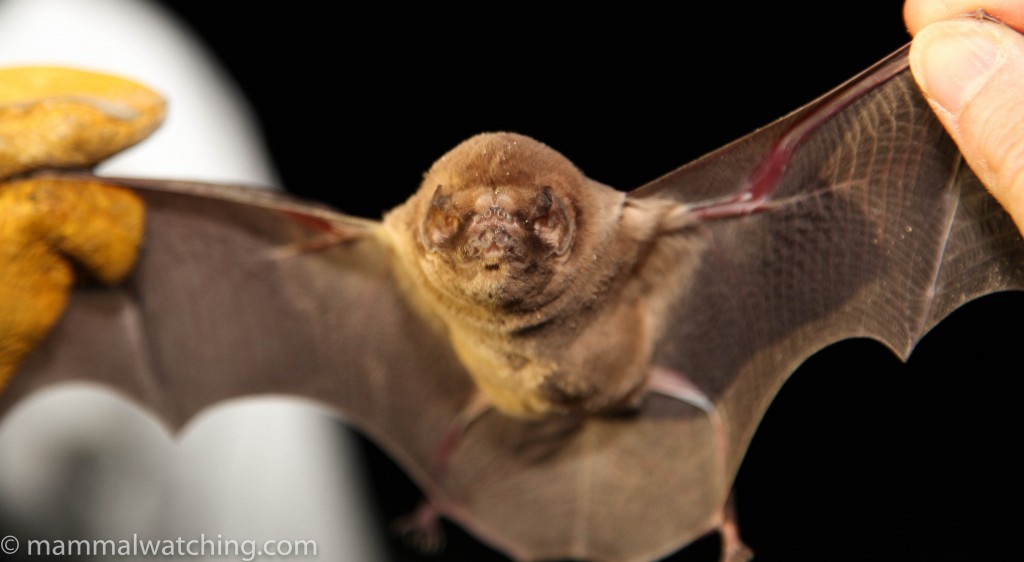
Ghost-faced Bat, Mormoops megalophylla
After that we caught a few of my first Californian Myotis (Myotis californicus).
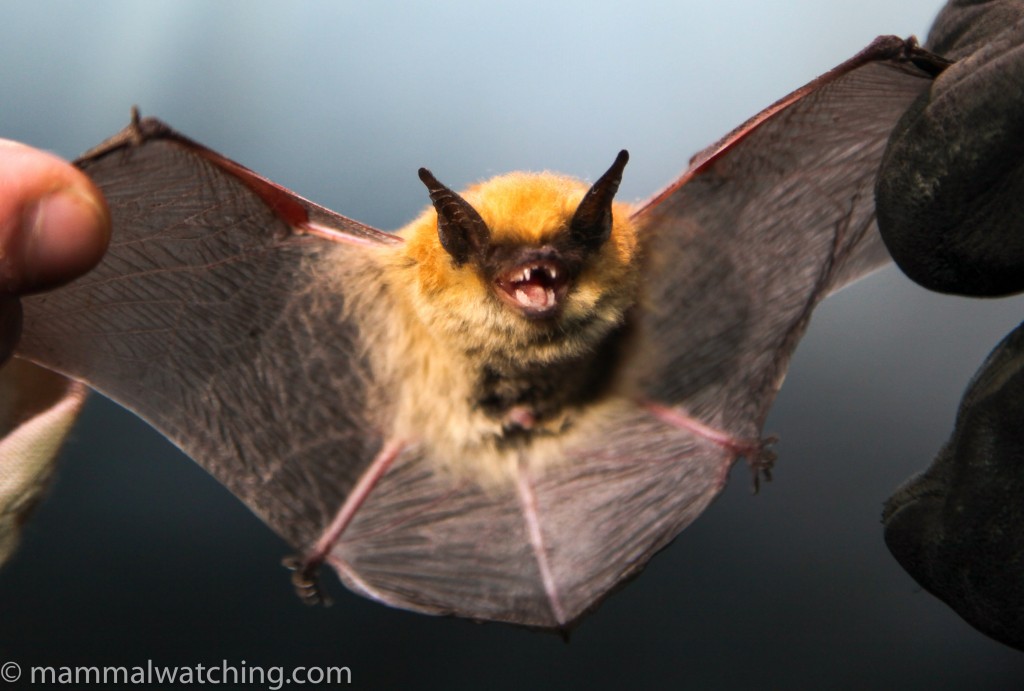
Californian Myotis, Myotis californicus
The last new species of the night in our group’s nets (we’d split into two groups) was a Pallid Bat (Antrozous pallidus).
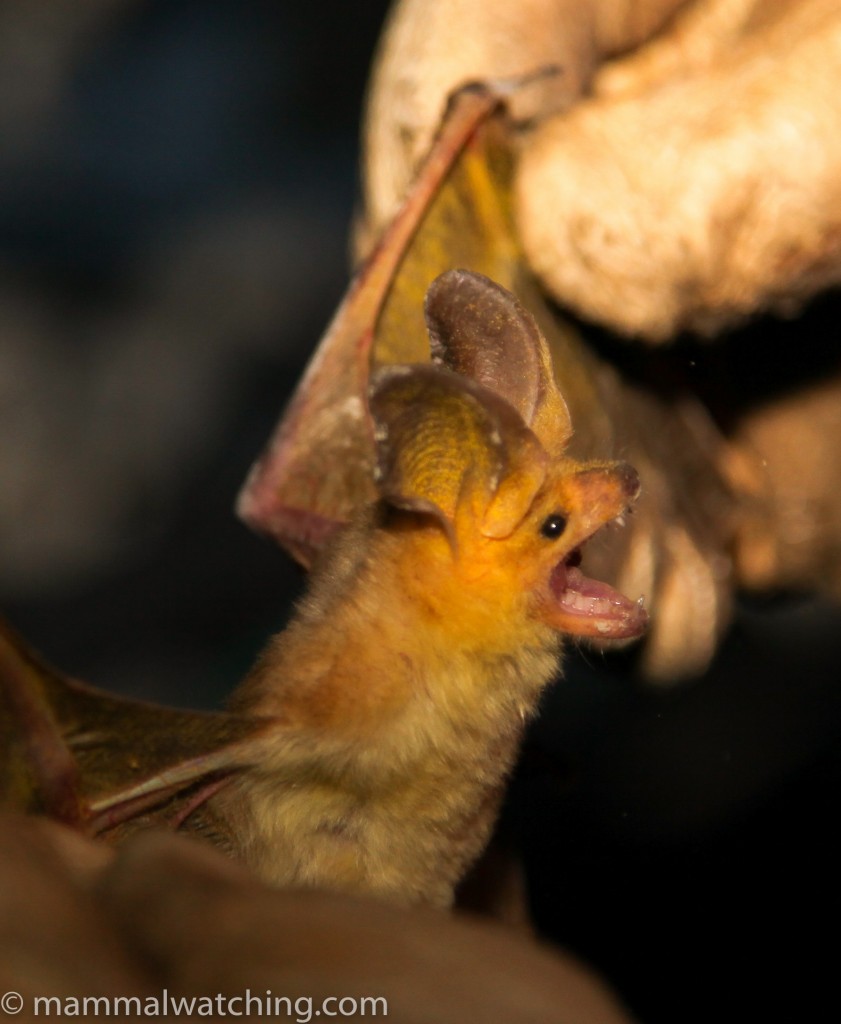
Pallid Bat, Antrozous pallidus
Meanwhile the other group, 300 metres along the wash, caught the most exciting bat of the evening: a groovy Western Yellow Bat (Lasiurus xanthinus), the first Loren had caught in 5 years in the park.
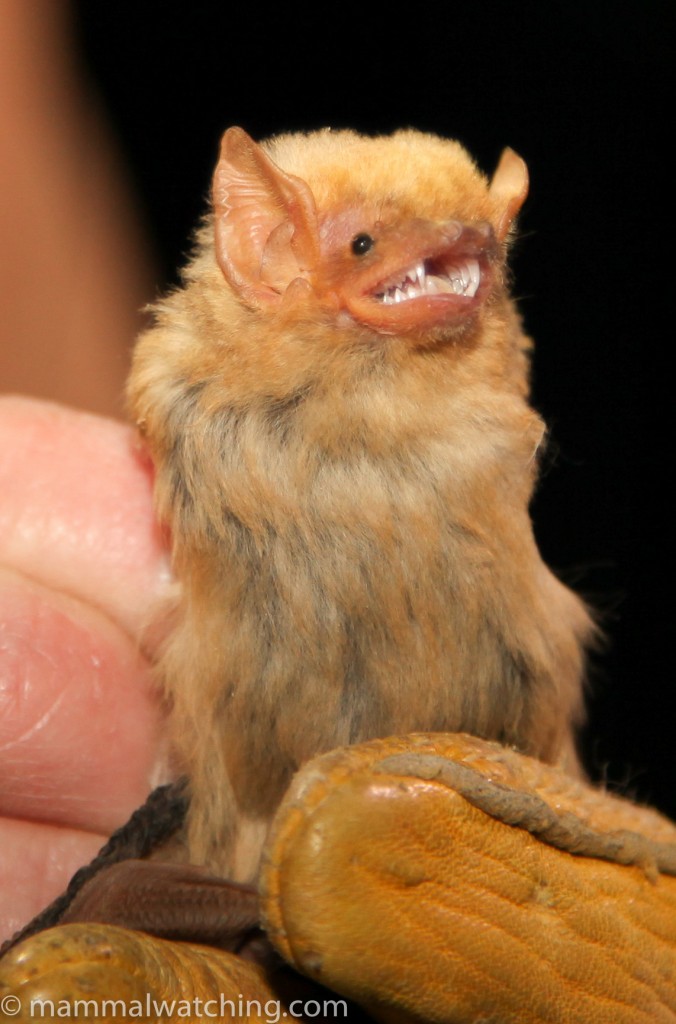
Western Yellow Bat, Lasiurus xanthinus
The other group also caught a Yuma Myotis, which escaped before I could get a look, and a spectacular – and feisty – Hoary Bat (Lasiurus cinereus) which we released at dawn.
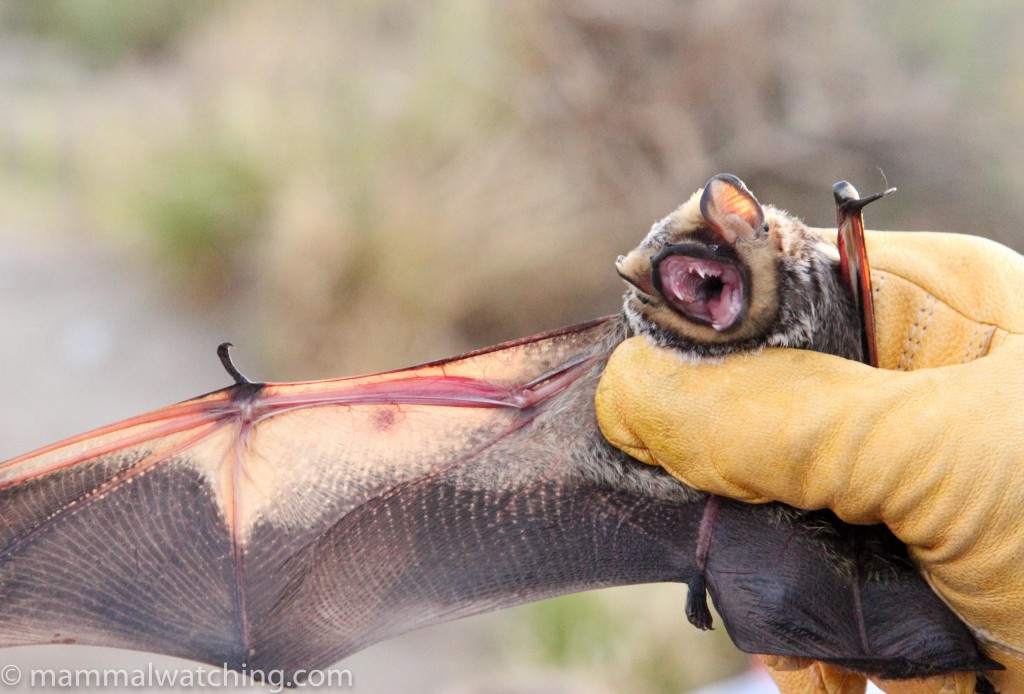
Hoary Bat, Lasiurus cinereus
What a great night. Sleeping (albeit intermittently) under the bright desert stars was glorious too.
I spent most of the day resting, but ventured out in the early evening to look for the near endemic Davis Mountain Cottontail, a species Loren Ammerman had helped describe. The Chisos Mountains are the place to look and Fiona Reid saw a couple on the Emory Peak Trail.
Loren recommended the Laguna Meadows Trail (particularly the meadows themselves) or the Lost Mine Trail in the evening. I walked up and down the latter for more than an hour from 6.30 p.m. but didn’t see any cottontails (only the Davis Mountain Cottontail lives at that altitude so identification should be easy). Driving down the road from Chisos Basin Lodge at about 8 p.m. I saw a couple of cottontails at around the four mile marker post (at about 1,600m elevation). They must have been Davis Mountain Cottontails (the ears in any case were too short for Desert Cottontails it seems).
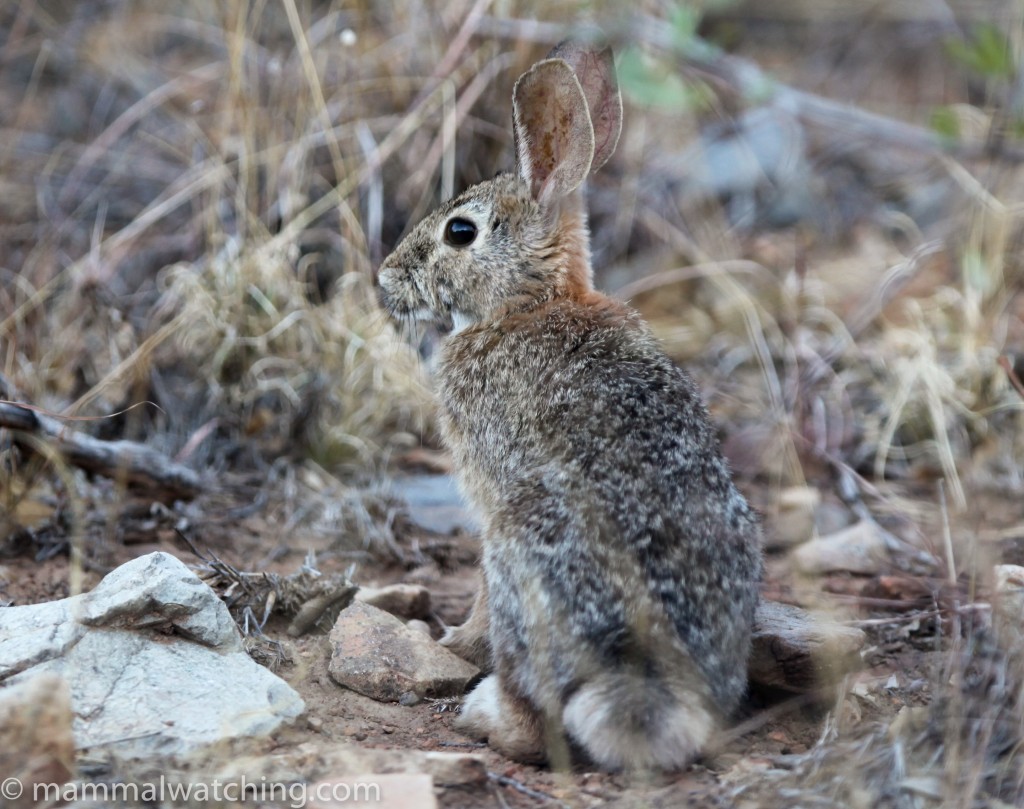
Davis Mountain Cottontail, Sylvilagus robustus
We bat trapped that night at Glenn Springs a few miles west of Panther Junction. We caught less (both in numbers and diversity) than the night before but it was a pretty spot and we did catch several of my first Western Small-footed Myotis (Myotis ciliolabrum). They are rather hard to distinguish from Californian Myotis.
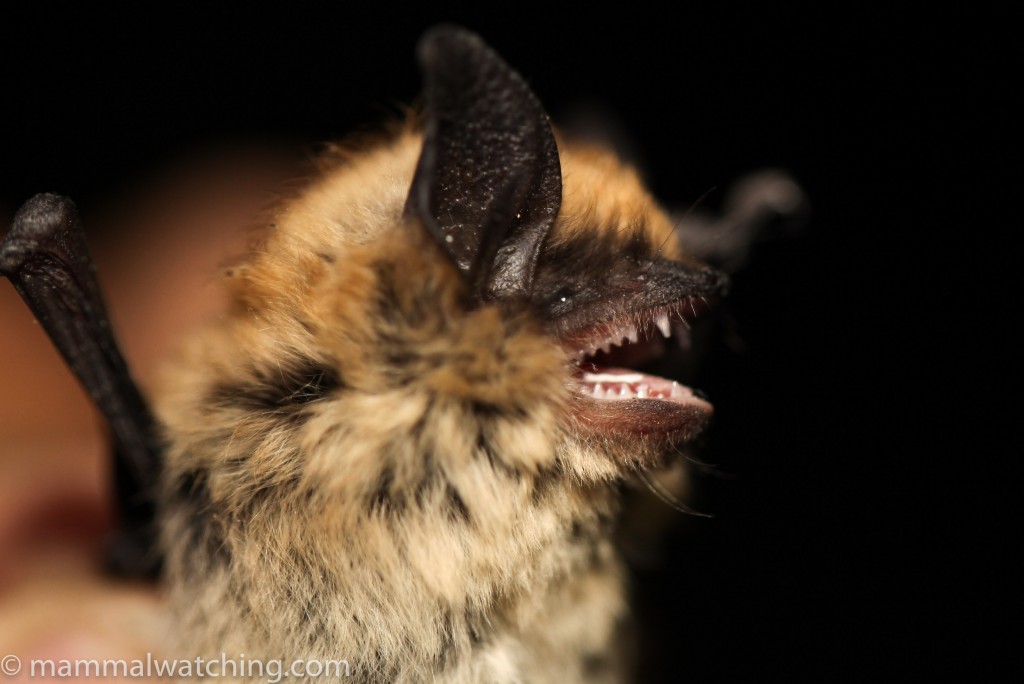
Western Small-footed Myotis, Myotis ciliolabrum
We also caught as a few more Ghost-faced Bats, and I got my first look at a Yuma Myotis in the hand.
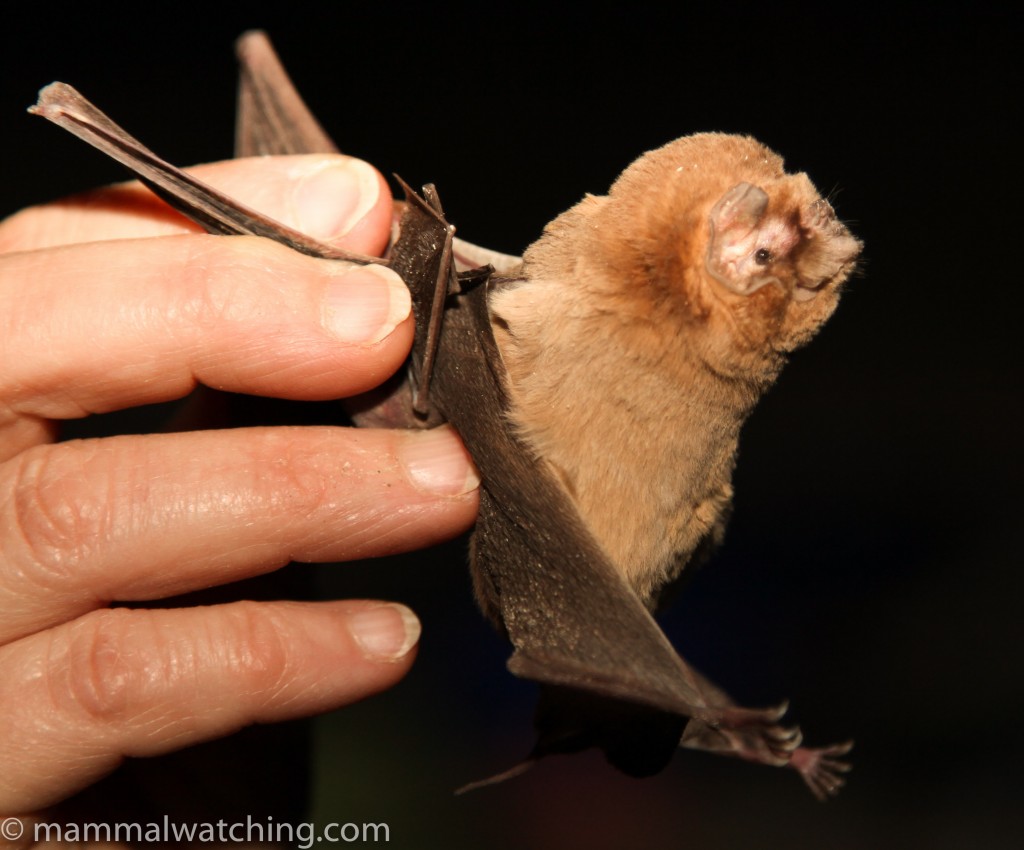
Ghost-faced Bat, Mormoops megalophylla
Several Big Brown Bats (Eptesicus fuscus) were the last new species of the night.
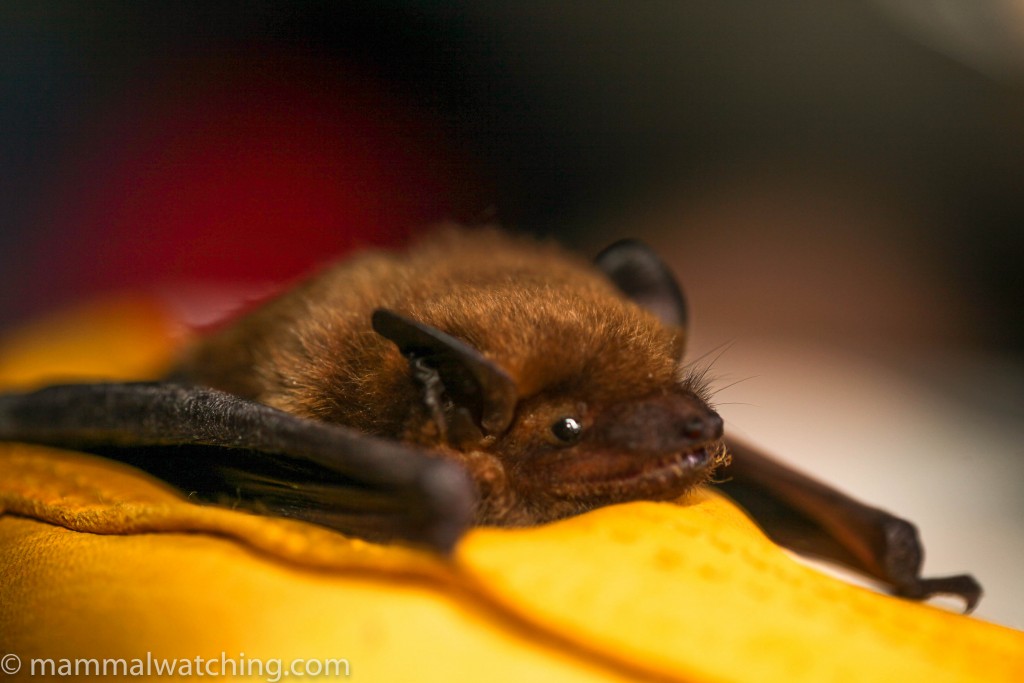
Big Brown Bat, Eptesicus fuscus
Driving back to the lodge at 2 a.m. I saw a Coyote and a species of pocket mouse dashed across the road. Walking behind my cabin I grabbed a small deer mouse which proved, the next morning, to be a White-ankled Mouse. My seventh lifer of the trip.
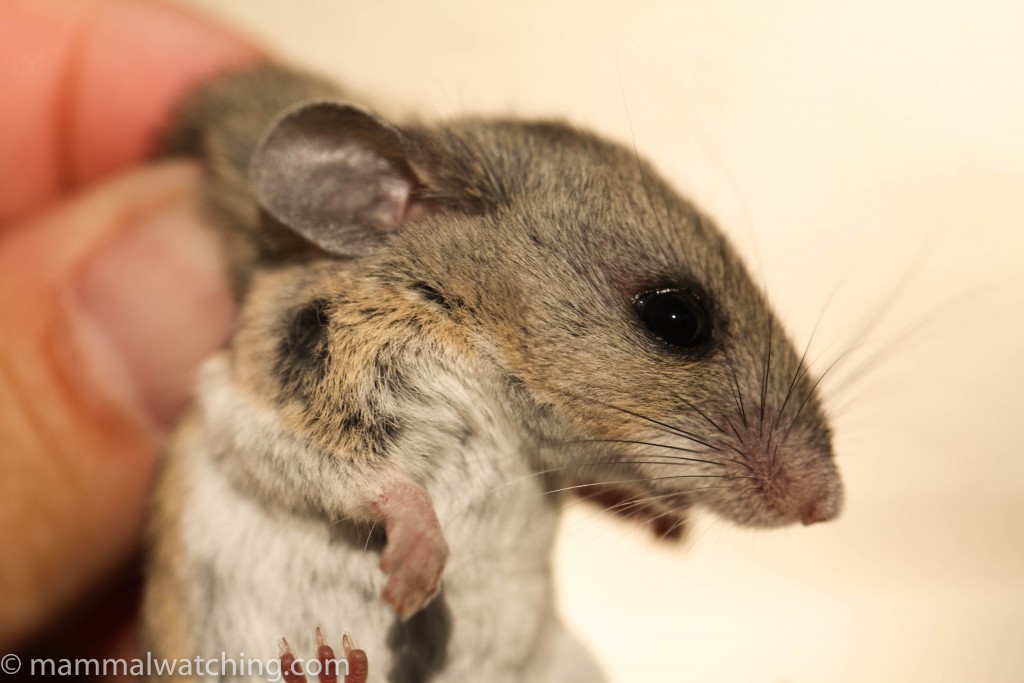
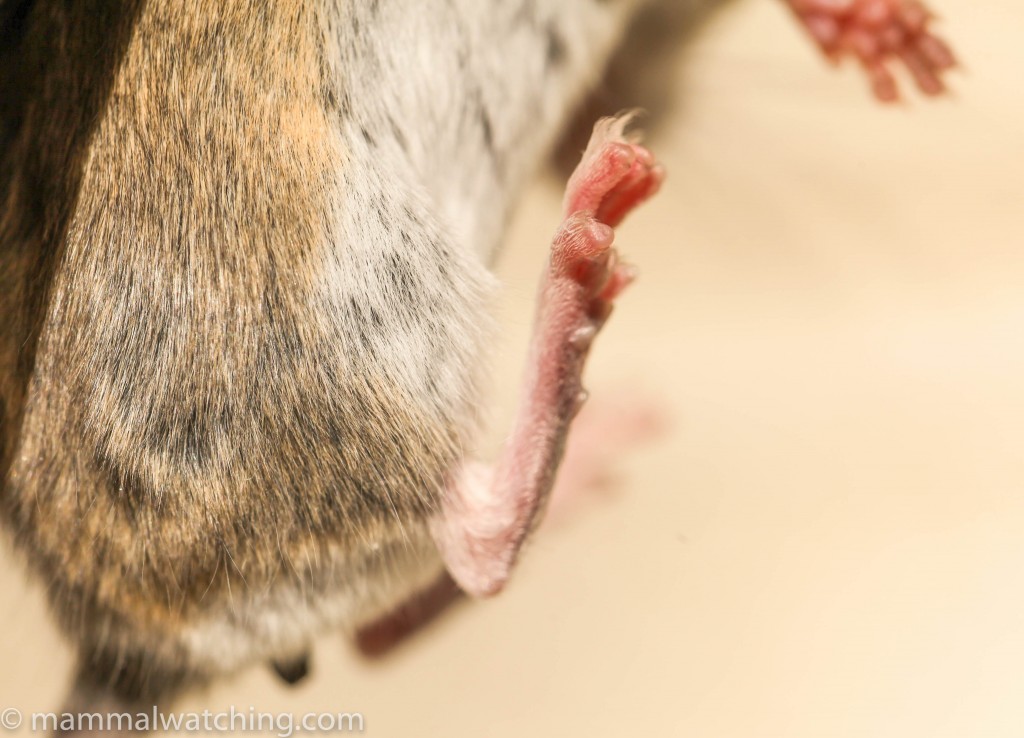
White-ankled Mouse, Peromyscus pectoralis
Elsewhere in the park I saw both White-tailed Deer and Mule Deer as well as Black-tailed Jackrabbits. Driving back to San Antonio there were a few Pronghorn on 385 (between Marathon and I10), as well as a large colony of Black-tailed Prarie Dogs about 10 miles north of Marathon. But none of the Spotted and Mexican Ground Squirrels I was hoping for.
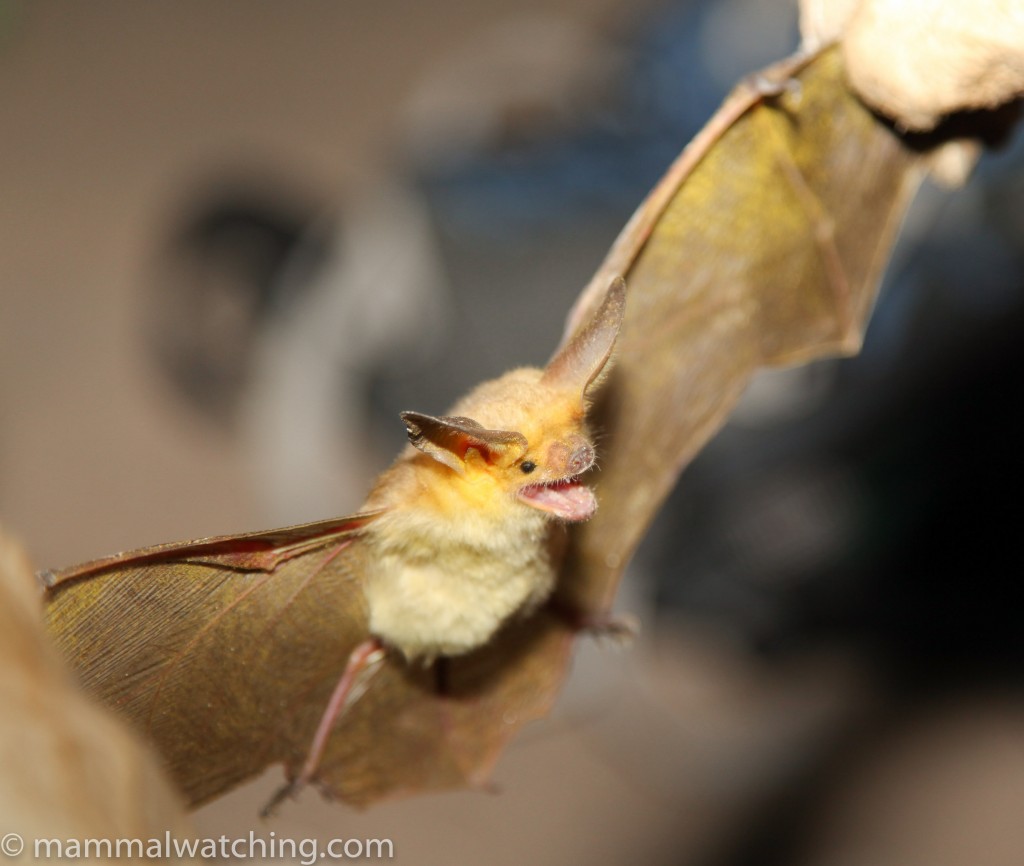
Pallid Bat, Antrozous pallidus
A big thanks to Loren Ammerman and her students for their hospitality, and to Fiona Reid for the introduction.
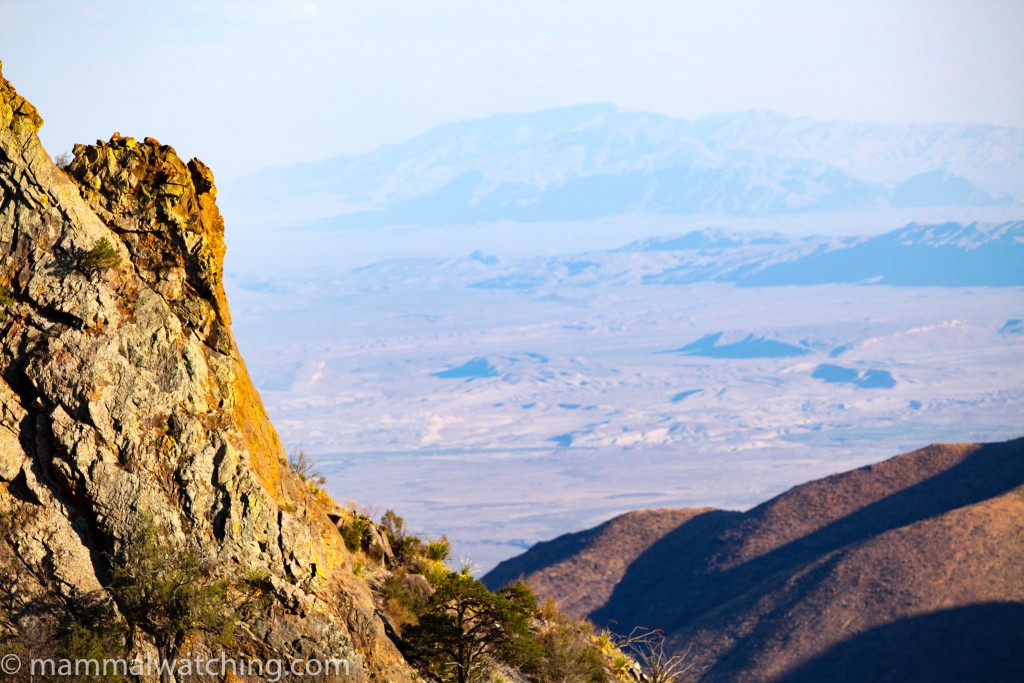
1 Comment
Leave a Reply
You must be logged in to post a comment.


Leslie Sokolow
Great report. I just love Big Bend NP but haven’t been there in decades.
BTW I always thought Mormoops meant “Bug Bear”, as in bug-sized bear-like creature.